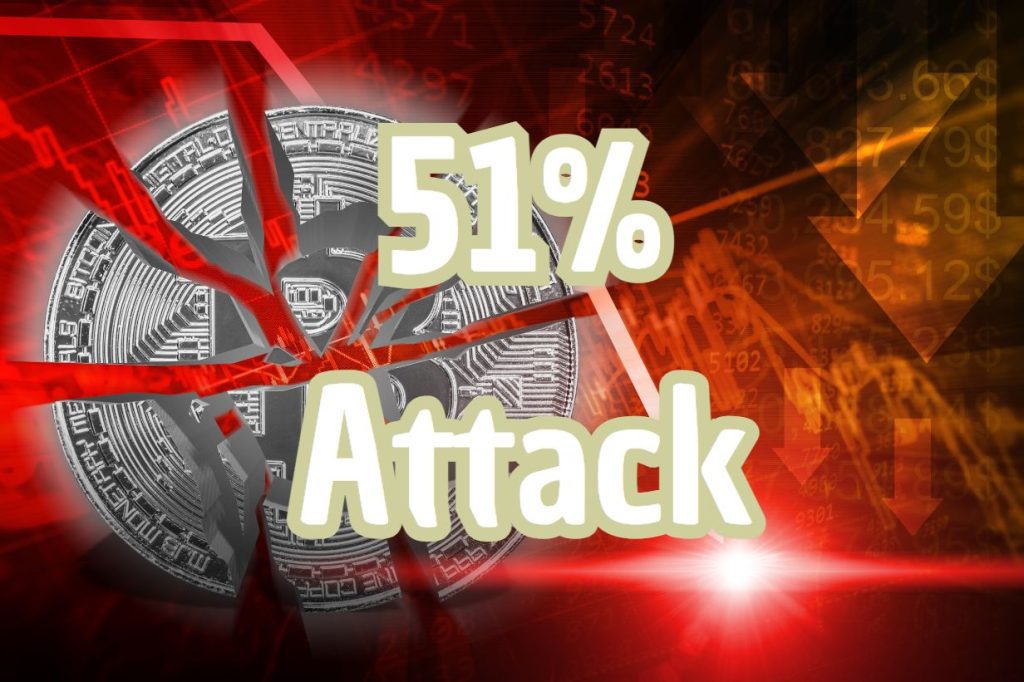Picture this: you’re exploring the exciting world of cryptocurrencies and blockchain technology, and you stumble upon the term “51% attack.” But what exactly is it, and why is it essential to grasp this concept? A 51% attack is a significant security risk that threatens the very foundation of decentralized networks. Understanding this phenomenon is crucial for anyone involved or interested in the world of blockchain and cryptocurrencies, as it highlights potential vulnerabilities and emphasizes the need for robust security measures. In this article, we’ll dive deep into the world of 51% attacks, their significance, and their impact on blockchain networks. Along the way, we’ll also explore some real-world examples that have made headlines in the crypto community and discuss possible countermeasures to protect against such threats.
Understanding Blockchain and Cryptocurrency Networks
Before we get into the nitty-gritty of 51% attacks, let’s first establish a solid understanding of blockchain and cryptocurrency networks. A blockchain is a distributed ledger that securely records transactions using cryptographic techniques. This technology allows for decentralized networks, which means that no single entity controls the system, and all participants share equal authority.
In the context of cryptocurrencies, a blockchain serves as a public and tamper-proof record of all transactions, ensuring that users can trust the system without relying on a central authority like a bank or government. To maintain the integrity of these decentralized networks, consensus mechanisms, such as Proof of Work (PoW) and Proof of Stake (PoS), are employed. These mechanisms enable network participants to agree on the state of the blockchain and validate new transactions, thereby preventing fraudulent activities and preserving the network’s security.
Defining a 51% Attack


So, what’s a 51% attack? In simple terms, it’s when an individual or group gains control of more than 50% of a blockchain network’s mining power, also known as its hash rate. By doing so, they can manipulate the network in various ways, undermining its security and integrity.
A 51% attack poses a significant threat to decentralized networks, as it enables the attacker to control the process of validating transactions and adding new blocks to the blockchain. With this level of control, the attacker can carry out malicious activities, such as double-spending (using the same digital currency more than once) or censoring specific transactions. In extreme cases, attackers can even rewrite the blockchain’s history, effectively erasing previous transactions and causing significant disruption to the network.
It’s crucial to recognize that a 51% attack is not a flaw in the blockchain technology itself, but rather a potential vulnerability that arises due to the distribution of mining power within a network. The more decentralized and secure a network is, the less susceptible it is to such attacks.
The Mechanics of a 51% Attack
Pulling off a 51% attack is a complex and resource-intensive endeavor, but it’s not impossible. To understand the mechanics of such an attack, let’s break down the process step by step:
- Acquiring mining power: The attacker must first amass a significant amount of mining power, either by purchasing and deploying their own mining equipment or renting mining power from third-party providers. This enables them to control the majority of the network’s hash rate.
- Mining in secret: Once they have the upper hand, the attacker begins mining blocks in secret, creating a private version of the blockchain that’s separate from the public one.
- Manipulating transactions: While mining in secret, the attacker can carry out nefarious activities like double spending, censoring transactions, and even altering the blockchain’s history.
- Broadcasting the private chain: When the attacker’s private chain is longer than the public one, they broadcast it to the network. Since blockchain networks typically follow the longest chain, the attacker’s chain replaces the public one, making their malicious activities part of the network’s transaction history.
However, attackers face considerable risks and limitations, such as detection, countermeasures from the network’s community, and substantial financial investments. Additionally, the more significant the attack, the more likely it is to be noticed and countered by the network’s participants.
Assessing the Likelihood of a 51% Attack
The likelihood of a 51% attack occurring depends on various factors, including the size of the network, the distribution of mining power, and the resources available to potential attackers. Generally, smaller networks with a higher concentration of mining power are more vulnerable to such attacks. Here are a few key points to consider when assessing the likelihood of a 51% attack:
- Network size: Larger networks with more miners and a broader distribution of mining power are more resistant to 51% attacks. This is because the resources required to control such a network are significantly higher, making an attack more costly and challenging to execute.
- Mining power distribution: Networks with a more decentralized mining power distribution are less susceptible to 51% attacks. If mining power is concentrated among a few entities, it becomes easier for an attacker to amass the necessary resources to launch an attack.
- Available resources: The resources available to potential attackers, such as mining equipment, cloud mining services, and financial means, can influence the likelihood of a 51% attack. The more resources an attacker can access, the easier it is for them to execute an attack.
The Cost of a 51% Attack
Executing a 51% attack requires a significant investment in both financial and technical resources. Potential attackers need to acquire enough mining equipment or rent mining power to control the majority of the network. Here’s a breakdown of the costs associated with such an attempt:
- Mining equipment: Purchasing and deploying a large number of mining rigs can be extremely expensive. Moreover, mining equipment requires regular maintenance and consumes significant amounts of electricity, adding to the overall cost.
- Renting mining power: An alternative to purchasing mining equipment is renting mining power from third-party providers, which can also be costly. The price depends on the hash rate required to control the network, and as the hash rate increases, so does the cost.
- Opportunity costs: Launching a 51% attack often comes with considerable opportunity costs. Attackers need to divert their mining resources away from other profitable ventures and risk losing potential mining rewards if their attack fails.
- Risk of detection and countermeasures: A successful 51% attack can have severe consequences for the attacker, including being detected by the community, facing legal repercussions, or suffering financial losses if the attack results in a decline in the value of the targeted cryptocurrency. Furthermore, the network’s community may take countermeasures, such as implementing security protocols or changing the consensus mechanism, to mitigate the impact of the attack or prevent future attempts.
- Considering all these factors, it becomes clear that the costs of a 51% attack can be staggering, and there’s no guarantee of success. The risk-reward ratio may not always be favorable, and attackers must carefully weigh the potential benefits against the substantial costs and risks involved.
Notable Examples of 51% Attacks in the Crypto World


51% attacks, while challenging to execute, have occurred in the past, affecting various cryptocurrency networks. Some high-profile cases include:
‣ Ethereum Classic (ETC) 51% Attack
In January 2019, Ethereum Classic, a well-known cryptocurrency, fell victim to a 51% attack. The assailant was able to double-spend around $1.1 million worth of ETC, causing significant disruptions and losses. This event led to a drop in ETC’s value and raised concerns about the network’s security.
‣ Bitcoin Gold (BTG) 51% Attack
In May 2018, Bitcoin Gold, a fork of Bitcoin, experienced a 51% attack. The attacker successfully double-spent approximately $18 million worth of BTG, causing substantial financial losses and undermining confidence in the network.
‣ Other Examples: Verge and ZenCash
Several other cryptocurrencies, such as Verge and ZenCash, have also been targeted by 51% attacks. These incidents highlight the prevalence of such attacks in the crypto space and emphasize the need for robust security measures to protect decentralized networks.
Consequences of a Successful Attack
A successful 51% attack can have severe short-term and long-term repercussions for a blockchain network, its users, and the broader cryptocurrency community:
- Financial losses: A 51% attack often results in financial losses for users, as attackers can double-spend or manipulate transactions, causing the value of the targeted cryptocurrency to plummet.
- Decreased trust: A successful attack undermines trust in the network and its security, leading to a decline in user confidence and potentially driving users away from the affected blockchain.
- Reputational damage: A 51% attack can tarnish the reputation of the targeted network, making it harder to attract new users and investors. This could lead to a decline in the network’s value, user base, and overall standing in the cryptocurrency ecosystem.
- Regulatory scrutiny: High-profile 51% attacks may attract regulatory attention, potentially leading to stricter regulations and oversight in the cryptocurrency space.
The Feasibility of a 51% Attack in Proof of Stake Networks


While 51% attacks are more commonly associated with Proof of Work (PoW) networks, it’s essential to consider the feasibility of such an attack in Proof of Stake (PoS) networks. PoS networks use a different consensus mechanism, in which validators are chosen to create new blocks and validate transactions based on the number of tokens they hold and are willing to “stake” as collateral.
In theory, a 51% attack in a PoS network would require an attacker to control more than 50% of the network’s total staked tokens. However, this would be incredibly expensive and risky, as the attacker would have to purchase a majority share of the cryptocurrency and stake it as collateral. Additionally, any attack on the network would likely devalue the attacker’s investment, creating a disincentive for such actions.
Moreover, PoS networks often implement additional security measures, such as slashing penalties for malicious validators and other safeguards, to deter potential attackers. These measures make it even more challenging and less appealing to execute a 51% attack on a PoS network.
Strategies for Preventing and Mitigating 51% Attacks
Thankfully, there are ways to reduce the risk of 51% attacks. Some of these strategies include:
- Adopting alternative consensus mechanisms: Switching to alternative consensus mechanisms like Proof of Stake (PoS) or Delegated Proof of Stake (dPoS) can help reduce the likelihood of a 51% attack. These mechanisms do not rely on mining power for validation, making it more difficult for an attacker to gain control of the network.
- Implementing security protocols: Networks can implement additional security measures, such as checkpoints and penalizing malicious nodes, to deter potential attackers and prevent them from manipulating the blockchain.
- Increasing decentralization: Encouraging a more decentralized distribution of mining power can make it harder for an attacker to amass the necessary resources to control the majority of the network’s hash rate.
- Community and industry efforts: The cryptocurrency community, including developers, users, and businesses, can work together to promote network security, share best practices, and develop solutions to prevent and mitigate 51% attacks. Collaboration and knowledge-sharing among different networks can help strengthen the overall security of the cryptocurrency ecosystem.
The Bottom Line
In conclusion, understanding the 51% attack is crucial for anyone involved or interested in the world of blockchain and cryptocurrencies. As we have seen, these attacks can pose a significant threat to decentralized networks, and their successful execution can have severe consequences for the targeted network and its users.
However, by adopting alternative consensus mechanisms, implementing security protocols, increasing decentralization, and fostering collaboration within the crypto community, it’s possible to mitigate the risk of 51% attacks and create a more secure and resilient cryptocurrency ecosystem. As blockchain technology and cryptocurrencies continue to evolve, it’s essential to remain vigilant about potential vulnerabilities and continuously work towards enhancing the security of decentralized networks.









